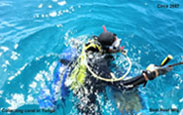FHI Coral Farm
In 2006, the company started to research and re-visit the possibility of farming Live Rock in the ocean. The team started working with the Hawaiian Department of Natural Land Resources for potential Mariculture sites to lease from the State of Hawaii. After getting the okay from the DLNR in Hawaii and locking down a 110 acre ocean site, we started to work on the environmental impact study for the farm. At that point, Geret and team started to work on developing new techniques to make artificial Live Rock from natural material. Material made from the same building blocks as the coral reef, but without damaging the fragile reef environment. It is from these early R&D stages that Real Reef was born. After months of researching the cost of permitting, building and operating a farm of this size, we realized it would not be profitable. It was this conclusion that put our dream of farming live rock once again on hold. Real Reef would have to wait another 3 years before resurfacing again on the team’s radar.
In 2008 we had closed our facility in Hawaii and Geret had come back home to oversee the aquaculture division and spear head the new FHI commercial coral farm. After long stints overseas, the partnership was again under one roof. The FHI coral farm was a test model to see if commercial coral farming could be a viable business. During the 4 years of running the test model, we propagated and sold hundreds of thousands of farmed corals. The idea of a wild live rock alternative was becoming more and more possible, as we became more of a farm than a marine coral/fish importer. The dream of having a captive reef aquarium with 100% eco-reef friendly farmed products seemed more possible every working day. Manufacturing and raising farmed fish, coral and live rock was new a realistic possibility within our grasp.




































